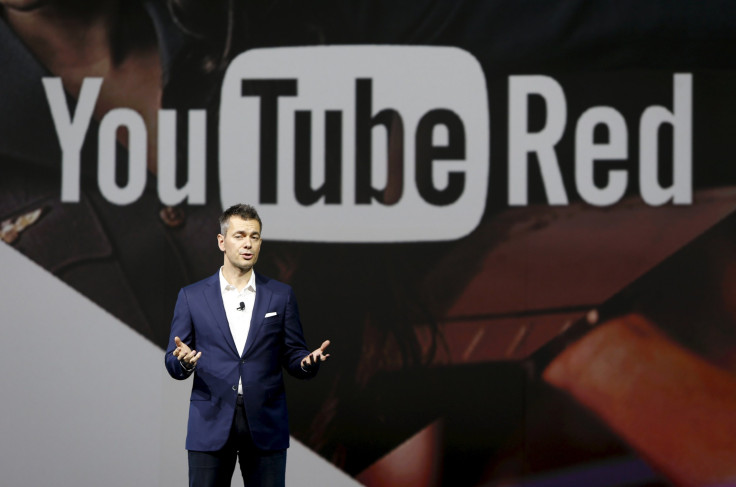Ad-free video streaming service on the rise

YouTube, through Red, introduced ad-free video streaming services into the mainstream exclusively for use in the United States last year. Basically, Red is Google’s take on Hulu and Netflix. It will produce its own shows, offer it for US$9.99 (AU$13.33) a month, and let it run like its competitors. The only thing different is that it has no ads.
Critics have given it great reviews, saying that it has lived up to its promise. Hulu and Netflix have already dabbled at zero ads on their platform but it’s really Google that transformed it into a trend. The only problem is that its original productions have remained mediocre versions, quality-wise, of current mainstream shows that keep a big slice of US audience glued to the TV. This, undeniably, says that YouTube has to do more in terms of being at par with the likes of “Game of Thrones,” “The Walking Dead” or “Downton Abbey.”
"If you are the type of person who enjoys the high-quality dramas and comedies coming out of Netflix, HBO, Showtime, Amazon, and so on, you will not like YouTube Red. The only way I could imagine an adult truly falling for YouTube Red is as part of a strategy to bond with his or her kids over goofy videos,” wrote Nathan McAlone of Business Insider.
Still, Red is successful in its own rights. It has its fair share of investors who are willing to produce exclusive content, staunch defenders against critics, as well as give it sizeable media attention. Its biggest contribution in the on-demand content industry perhaps is that it made other brands realize that zero-add streaming is possible and lucrative.
Vevo is quick to respond. It said that it is now preparing to launch an ad-free streaming service for music videos. The Universal Music and Sony partnership’s take on YouTube seeks to monetise and make music video streaming more popular and enjoyable by totally eliminating the intrusive ads.
Vevo CEO Erik Huggers admitted that the company has managed to survive through ads but the board wants to try their hand at subscription model, which is becoming a trend these days. “Today our business is all about ad-supported,” said Huggers at the conference, via Re/code. “So we think that one of the important things — we hear this throughout the industry — is the move toward subscription. That’s something we’re interested in.”
Vessel, YouTube’s direct competitor, also announced that its paid subscribers will no longer have to deal with interfering ads. This came after each and every platform in the on-demand service industry offered their own zero-advertisement tiers.
"One of the most popular requests has been for an ad-free experience. In response, we are excited to announce that, starting today, we will be making Vessel ad-free for all paying subscribers," company CEO and co-founder Jason Kilar wrote on a blog post on the company’s official website. The company, despite having smaller portion of the streaming market, continues to attract investors. This year it successfully raised over US$134 million (AU$179 million) in venture funding upon experiencing subscriber boost since the last quarter of last year.
YouTube’s move has also encouraged Canadian-American entertainment firm Lionsgate to follow suit. Forbes revealed that Lionsgate will also launch its own brand of ad-free streaming service on May 7. This, the report said, is a collaboration between the media outfit and Comic-Con International, as the two brands want to offer subscription video-on-demand (SVOD) service to all c omic book and pop culture fans across the United States.
"The new platform will provide a year-round destination to enjoy all facets of the community and access the vast diversity of content the world has come to expect from the largest and longest-running pop cultural celebration of the year," said Seth Laderman, EVP and General Manager for Comic-Con HQ.
According to a report by Future Market Insights, video on demand (VOD), or video streaming, is a continuously growing market not only in the United States but also across the globe. It is predicted to grow by US$263 billion (AU$351 billion) by 2016. In 2014, the global market for video streaming was only valued at US$207 billion (AU$277 billion).
North America and Western Europe remain the two largest markets for video streaming. Among the reasons is that these areas boast of faster and more robust Internet infrastructure as a region. Asia Pacific, though seen as a growing force in the global market to an extent that it could surpass the European market by over 22 percent in 2020, remains small at its 13 percent share in the global VOD market.
"We believe that Asia, once its Internet market becomes as sturdy as its economic growth, can be at par with its North American and European counterparts," commented Daniel Bland, revered marketer and CEO of revolutionary network extender firm 5B AR z International (OTCQB: BARZ) . The company has successfully convinced giant telcos in India in 2015 that its radio frequency-based plug-and-play network extender technology can help them improve their services as they fix their own network infrastructure. It has now begun its Southeast Asian expansion, currently talking with giant telcos there, as part of its global marketing plan.
The North America VOD market will exceed US$100 billion (AU$134 billion) mark before 2017 begins. Stronger Internet connection, access to better devices and governments' commitment to utilising 5G, as well as the possible commercialisation of Internet of Things (IoT) in 2020 will remain key to its growth.





















